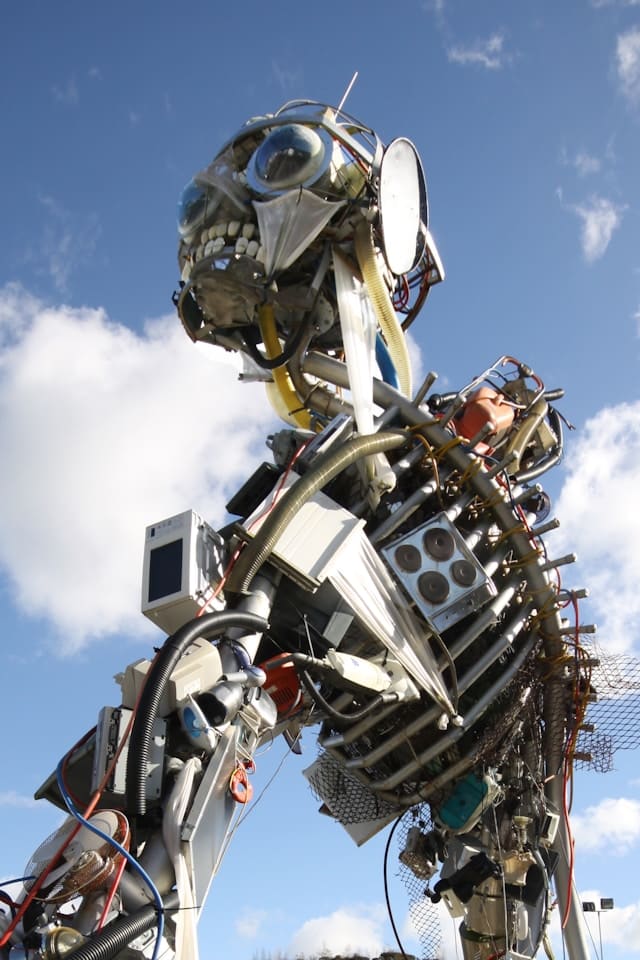How Can Urban Art Projects Foster Community Development in the UK?

Urban art projects, including graffiti, murals, and other forms of street art, are becoming increasingly integral to the fabric of cities across the UK. As the public’s appreciation for the arts evolves, so too does the understanding of their potential to foster social engagement and community development. This article explores the transformative potential of urban art projects and their role in uniting communities, enhancing cultural understanding, and contributing to urban regeneration.
The Power of Art in Public Spaces
Art in public spaces can serve as a powerful tool for community engagement and urban development. From graffiti-laden streets of London to world-renowned murals in Manchester, these creative manifestations are not just decorative elements; they can be the catalysts for social change and community development.
En parallèle : Can 3D Bioprinting Revolutionize Organ Transplants in the UK?
Public art fosters a sense of community identity. It enables people to connect with their environment, to participate in public dialogue, and to engage with their city in a new and thought-provoking way. It can illuminate social issues, celebrate cultural diversity, or simply brighten up an otherwise grey urban landscape.
Street art, in particular, is often born out of the local community. It serves as a platform for artists to express their views, tell their stories, and share their creative vision with the public. Whether it’s a sprawling mural that pays homage to local culture or a small-scale graffiti piece that makes a poignant social statement, these works of art can spark conversations, inspire creativity, and help to build stronger, more engaged communities.
A lire en complément : What Are the Best Apps for Learning British Sign Language (BSL)?
The Role of Artists in Community Development
Artists play a crucial role in community development. Their creative projects can breathe new life into neglected urban spaces, transform perceptions of a neighbourhood, and serve as a catalyst for positive change. These artists are not just creating art; they are shaping the social fabric of their communities.
Artists can engage with the community in myriad ways. They can collaborate with local residents on participatory art projects, lead workshops or classes, and invite the public to take part in the creative process. They can also use their art to shed light on the issues affecting their community, from social inequality to environmental concerns.
Graffiti artist Banksy, for example, has used his art to make powerful social commentaries, sparking debates and raising awareness about various issues. His works have become landmarks in their own right, drawing tourists and boosting local economies.
In this way, artists can be agents of change, using their creative abilities to inspire, engage, and bring people together. They can help to foster a sense of community pride, stimulate cultural development, and contribute to the sustainable development of their city.
How Urban Art Contributes to Cultural Development
Urban art, with its raw, unfiltered expression, contributes significantly to the cultural development of a city. It reflects the unique characteristics of a community, its history, its struggles and triumphs, and its evolving identity.
Artists incorporate elements of their local culture into their artworks, which can serve as a form of cultural preservation. They can also use their art to promote cultural exchange, fostering mutual understanding and respect between diverse community groups.
Moreover, the arts can generate economic and social benefits. Tourists are drawn to cities with vibrant art scenes, resulting in increased tourism revenues. Furthermore, a strong arts presence can attract more residents and businesses, enhancing the city’s overall quality of life.
Transforming Urban Spaces into Creative Hubs
Urban art projects not only beautify cities but also transform them into creative hubs, fostering innovation and creativity. They can turn underused or neglected spaces into vibrant, engaging areas that inspire and uplift the community.
Artists can collaborate with city planners and developers to integrate public art into urban regeneration projects. By doing so, they can help to create more attractive, liveable, and sustainable urban environments.
For instance, the city of Bristol has been transformed by its thriving street art scene. Once a hub of industry, it’s now a vibrant cultural hotspot, home to numerous art festivals and admired for its edgy, creative vibe.
In conclusion, urban art projects can play a significant role in community development. They serve as a platform for social engagement, cultural expression, and urban regeneration. They demonstrate the transformative power of the arts and their potential to create more vibrant, inclusive, and sustainable cities. As more cities begin to recognise this, the future of urban art in the UK looks bright indeed.
Enhancing Social Connections and Promoting Mental Health
Public art, particularly street art and graffiti, has a profound impact on enhancing social connections and promoting mental health. Art projects provide a platform for people to interact, learn, and bond over shared experiences and interests. Community engagement in art projects can help to combat social isolation, creating a sense of belonging and camaraderie that is crucial for mental health.
Art projects often bring together people from different walks of life, fostering a sense of unity and mutual respect. For instance, when young people collaborate on a wall mural, it provides them with an opportunity to express their creative voices collectively. It allows them to learn from each other and form meaningful relationships.
Furthermore, public art has a positive impact on mental health. Engaging with art can reduce stress, lift moods, and provide a creative outlet for people struggling with mental health issues. It promotes a sense of accomplishment and boosts self-esteem.
Artists such as Banksy, have also used their work to shed light on mental health issues, helping to raise awareness and reduce stigma. Thus, the role of street art in fostering social connections and promoting mental health is as crucial as its aesthetic appeal.
Urban Art and Climate Change
Street art and graffiti have also played a significant role in raising awareness about climate change. Artists often use their work as a platform to voice their concerns about environmental issues and to inspire others to take action.
Art projects can also contribute to sustainable urban development. For instance, art installations made from recycled materials not only beautify urban spaces but also send a strong message about waste reduction and the importance of recycling.
In cities like York, artists have collaborated with environmental organisations to create murals that highlight the impacts of climate change. These artworks serve as stark visual reminders of the urgency of the environmental crisis, while also emphasising the power of individual and collective actions to mitigate these impacts.
Moreover, artists can engage the community in environmental art projects. These can range from creating biodiversity-themed murals to organising litter-picking and upcycling events. Such initiatives not only beautify the city but also foster environmental responsibility among residents.
Conclusion
Urban art projects, with their vibrant expressions and deep-rooted community connections, are powerful tools for community development, social connection enhancement, mental health promotion and climate change awareness. They can transform public spaces into interactive galleries that engage residents, promote cultural identity, and stimulate economic development.
Artists, in their unique role, are not only the creators but also the activators of these transformative processes. They channel the pulse of their communities into their artwork, fostering a sense of unity and pride, while also addressing pressing social and environmental issues.
As the UK continues to recognise the transformative power of public art, more cities are expected to embrace such initiatives. By doing so, they can create more inclusive, vibrant, and sustainable urban environments. The future of urban art in the UK represents a dynamic fusion of tradition and innovation, a colourful tapestry woven from the threads of community collaboration, cultural expression, and social responsibility.
